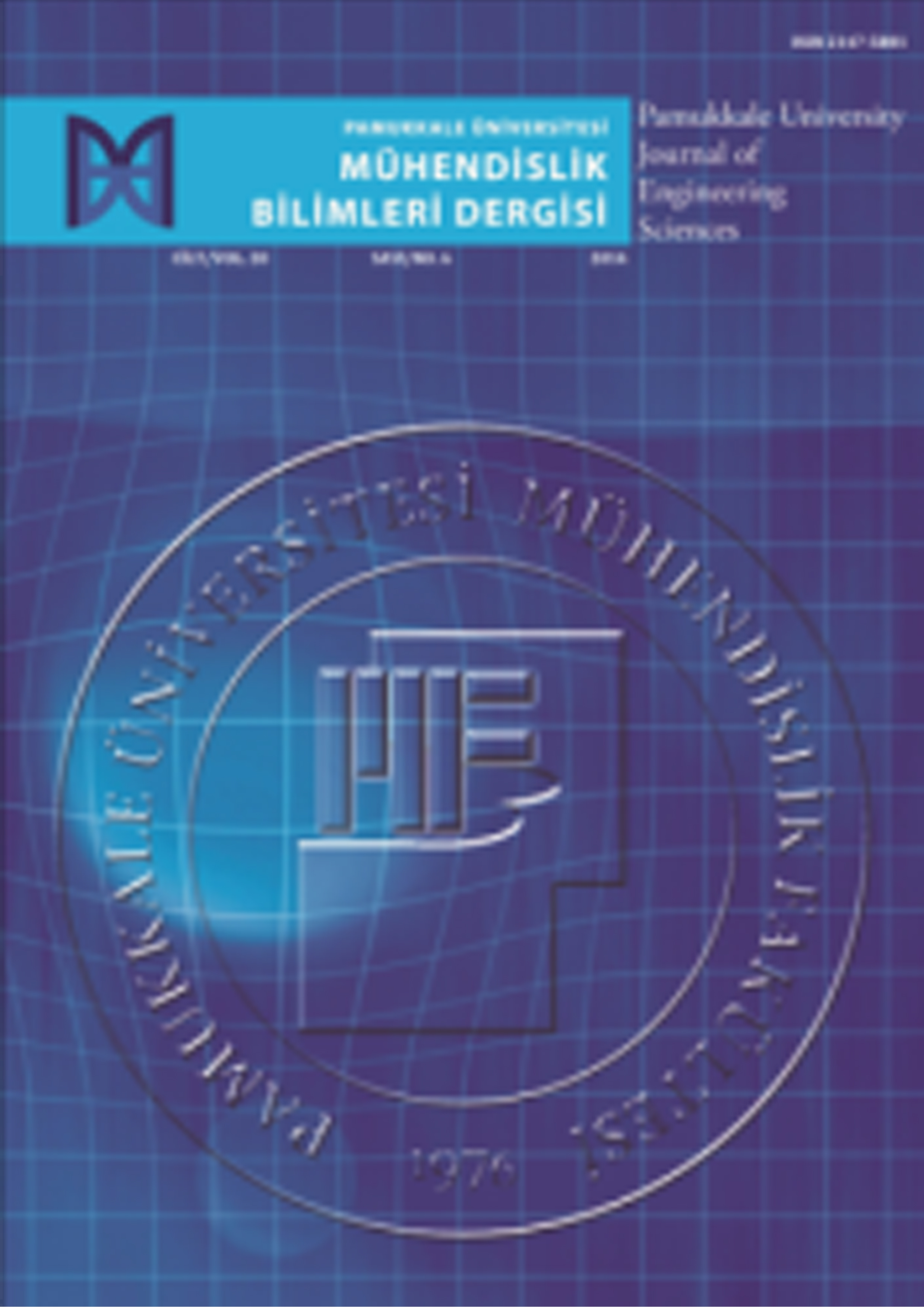
Perde duvar ile güçlendirmede epoksi kullanım durumu ve ankraj bindirme boyunun betonarme çerçevenin performansına etkilerinin deneysel olarak incelenmesi
Orkun Çelik1, Orhan Doğan2, Mehmet Ali Kalaylı31Milli Savunma Bakanlığı, Ankara, Türkiye2İnşaat Mühendisliği Anabilim Dalı, Mühendislik ve Doğa Bilimleri Fakültesi, Kırıkkale Üniversitesi, Kırıkkale, Türkiye
3Çalışma ve Sosyal Güvenlik Bakanlığı, Ankara, Türkiye
Bu deneysel çalışmada, piyasada epoksi olarak adlandırılan kimyasal dübel kullanım durumları ile ankraj bindirme boyuna ilişkin detayların belirlenmesi, güçlendirmenin maliyet, iş gücü, zaman ve malzeme kullanımı açısından ekonomiklik sağlayacak standartların ortaya koyulması, Türkiye Bina Deprem Yönetmeliği-2018 (TBDY-2018)de belirtilen standartlara ilave edilebilecek yeni standartların belirlenmesi amaçlanmıştır. Yatay ve düşey yüklerin etkisine maruz bırakılmak üzere 1/2 ölçekli, 150 cm x 150 cm ebatlarında iki boyutlu toplam altı adet betonarme çerçeve, üç grup olarak deney için hazırlanmıştır. Bu çerçevelerden dört tanesine 42 cm uzunluğundaki ankrajlarla, ankraj derinliği 18 cm olan 6Ø8 ankraj uygulaması ile perde ilavesi yapılmıştır. Diğer iki tanesine ise 20 cm uzunluğundaki ankrajlarla, ankraj derinliği 12 cm olan 6Ø8 ankraj uygulaması ile perde ilavesi yapılmıştır. Tüm çerçeveler için göçme seviyesine ulaştıktan sonra 0.95 Pmaxa kadar yükleme yapılarak, üç gruba ayrılmış çerçeveler ile toplam altı adet deney yapılmıştır. Epoksi kullanılmayan deney grubunun, epoksi kullanılan deney grubuna göre; rijitliğin % 6.42 oranında azaldığı, enerji tüketim kapasitesinin % 2.85 oranında azaldığı ve maksimum enerji taşıma kapasitesinin ise % 0.12 oranında arttığı görülmüştür. Güçlendirmede epoksi kullanılmamasının, epoksi kullanımına göre anlamlı bir fark yaratmadığı, ankraj bindirme boyunun ise
TBDY-2018de 10Ø olarak belirtilen ankraj bindirme boyunun en az 15Ø olması gerektiği sonucuna ulaşılmıştır. Bu çalışmanın sonuçları, benzer yapısal müdahalelerin mevcut taşıyıcı sistemlere etkisini anlamak açısından önemli veriler sunmaktadır. Ayrıca çalışma, epoksi kullanımının ve ankraj bindirme boyunun deneysel olarak araştırılması ve TBDY-2018 standartlarıyla karşılaştırılması bakımından özgün bir katkı sunmaktadır.
Anahtar Kelimeler: Ankraj donatısı, epoksi, ankraj bindirme boyu, güçlendirme, perde duvar
Experimental investigation on the use of epoxy in shear wall strengthening and the effects of anchorage lap length on the performance of reinforced concrete frames
Orkun Çelik1, Orhan Doğan2, Mehmet Ali Kalaylı31Ministry of Defence, Ankara, Türkiye2Civil Engineering Dept., Faculty of Engineering and Natural Sciences, Kırıkkale University, Kırıkkale, Türkiye
3Ministry of Labour and Social Security, Ankara, Türkiye
This experimental study aims to determine the usage conditions of chemical anchors (commonly referred to as "epoxy" in the market) and the details regarding anchorage lap length, establish cost-effective standards for strengthening in terms of cost, labor, time, and material usage, and identify new standards that could be added to the Turkish Building Earthquake Code-2018 (TBDY-2018). For this purpose, a total of six two-dimensional reinforced concrete frames, scaled at 1: 2 with dimensions of 150 cm × 150 cm, were prepared in three groups for testing under horizontal and vertical loads. Four of these frames were strengthened with a shear wall addition using 42 cm-long anchors with an embedment depth of 18 cm (6Ø8 anchors), while the remaining two frames were strengthened with 20 cm-long anchors with an embedment depth of 12 cm (6Ø8 anchors). After reaching the collapse level, all frames were loaded up to 0.95 Pmax, and a total of six experiments were conducted on the frames divided into three groups. The results showed that, compared to the group using epoxy, the non-epoxy group exhibited a 6.42% decrease in stiffness, a 2.85% reduction in energy dissipation capacity, and a 0.12% increase in maximum energy carrying capacity. It was concluded that omitting epoxy in strengthening does not create a significant difference compared to epoxy use, whereas the anchorage lap lengthspecified as 10Ø in TBDY-2018should be at least 15Ø. The findings of this study provide critical data for understanding the effects of similar structural interventions on existing load-bearing systems. Moreover, this study provides an original contribution by experimentally investigating the use of epoxy and anchorage lap length, along with their comparison with TBDY-2018 standards.
Keywords: Anchorage, epoxy, anchorage lap length, reinforced concrete, shearwall
Makale Dili: Türkçe



